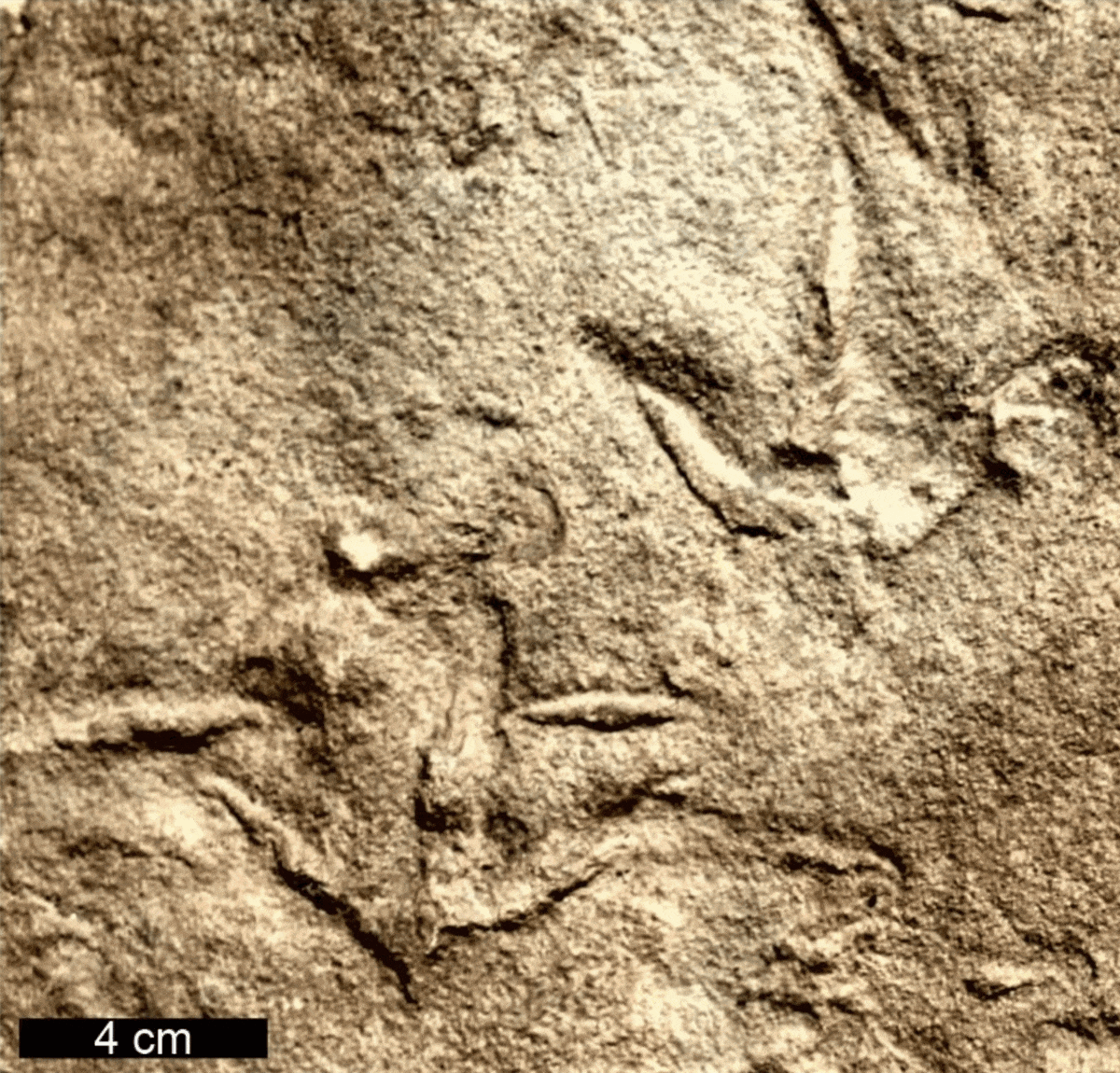Mysterious Creatures With Bird-Like Feet Made These Tracks Long Before Birds Evolved
The footprints pre-date the earliest known fossils of avian ancestors by roughly 60 million years, per a new study

Mysterious creatures with bird-like feet roamed around southern Africa more than 210 million years ago, according to new research—roughly 60 million years before the earliest known bird ancestors.
Scientists recently re-analyzed footprints, casts and sketches from various sites in Lesotho, a country encircled by South Africa, that date to the Late Triassic and Early Jurassic periods. They described the unusual tracks in a paper published last week in the journal PLOS ONE.
The footprints pre-date the earliest-known fossils from the ancestors of modern birds, which are roughly 150 million to 160 million years old. The findings could shed new light on the evolution of birds, which arose from a group of carnivorous, two-legged dinosaurs called theropods. Or, they might indicate that bird-like feet evolved independently in other animals before the first avians appeared.
Researchers still don’t know which creature left behind the three-toed footprints in southern Africa. However, based on the fossils’ age, they suspect some sort of dinosaur was responsible.
“We’re pretty sure it’s not a bird, and it’s most likely a dinosaur, but what dinosaur I’m not really sure,” says study co-author Miengah Abrahams, a geologist at the University of Cape Town, to New Scientist’s Ryan Truscott. “We have nothing in our local fossil record that’s comparable.”
For the study, scientists revisited 163 footprints that scientists call Trisauropodiscus, a genus assigned by French paleontologist Paul Ellenberger based on preserved tracks of unknown animals, rather than fossilized remains. They studied tracks from a site called Maphutseng and reviewed archival materials documenting footprints at three other sites in the region.
From this broad analysis, the researchers were able to divide the tracks into two groups based on their shape: One set were bird-like with widely splayed outer digits and slender toes, while the other group had rounder, longer toes that were less splayed and did not resemble bird tracks as closely.
The findings add to the murky picture of Trisauropodiscus, which remains a source of debate among paleontologists. Scientists can’t agree on how many species belonged to the genus, nor what the footprint-making animals might have looked like. They’re also unsure what relationship the creatures have to birds, if any.
It’s difficult for scientists to work backward from footprints to determine which animal made them, because the impressions’ shapes can vary greatly depending on several factors, such as the type of material the creature stepped on. So, at least for now, the animals that left these tracks 210 million years ago remain a mystery.
“Footprints are this really unique record,” says Julia Clarke, a paleontologist at the University of Texas at Austin who was not involved in the new study, to CNN’s Mindy Weisberger. “There’s always going to be that zone of uncertainty, just in the nature of the data that we have.”
/https://tf-cmsv2-smithsonianmag-media.s3.amazonaws.com/accounts/headshot/SarahKuta.png)
/https://tf-cmsv2-smithsonianmag-media.s3.amazonaws.com/accounts/headshot/SarahKuta.png)